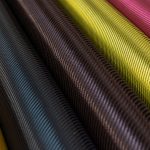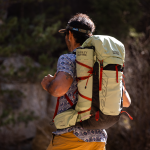By Dirk Sorenson, Executive Director, Industry Analyst, Sports, The NPD Group
Before the holidays, I spoke at The Running Event in Austin, Texas, and it got me thinking more about how the running market needs to behave in the months ahead.
At a high level, the manufacturer story being told is one of technical innovation to spur more sales in a premium market. Promoting these innovations is a logical strategy for running brands. Indeed, Nike’s Vaporfly shoe, which has garnered a lot of press, has ushered in a technology war of sorts between running shoe companies. Carbon footplate technology is now a frontier where shoe brands can tell a technical story that resonates with the established runner. And for the most part, the footwear brands seem to be looking at the premium consumer for growth; NPD’s retail sales data supports this focus as running shoe products in the $150+ price band have grown by 18% in the last 12 months within the sporting goods and specialty retail markets. Running shoes selling below $150 showed no growth in the last year within the same channels.**
Focusing on the established runner and technical innovation makes short term sense as running shoe brands look to find ways to be relevant despite the fact that the sport leisure shoe market is continuing its strong growth and taking share from performance footwear. Within the sporting goods and specialty retail channels that NPD monitors, in the last 12 months sport leisure shoe sales (casual sneakers) grew by 7% while performance shoes in general declined by 4%.* This focus on technology creates relevance for running brands, as well as a reason for the consumer to buy. The downside of this approach, however, is that those technology stories tend to engage the established runner, but have a distancing effect on new running participants and younger buyers that have demonstrated that they have less desire to engage in competition and the purchase of highly technical products. Focusing on technology becomes overwhelming for a new buyer to understand and diminishes engagement in the activity. If inviting new participants is the objective, then technology improvement is likely not the answer.
In thinking about this lack of engagement with the new runner, I’ve found the realm of nutrition and recovery products particularly interesting. For the most part, these products and brand messages seem to invite all runner levels and even non-runners to engage. Growth in recovery products like foam rollers and manual massage products is currently at 24%, according to NPD.* For the typical running store, these products engage all athlete levels and have broad appeal well beyond the committed runner, providing the opportunity to connect with new consumers.
Some brands are also looking to invigorate sales through aggressive pricing strategies. Goodr Sunglasses was the best example of this that I saw at the event. Their booth had non-stop traffic, and given that their pricing strategy of focusing on a $25 price-point enables an easy add-on sale, retailers were intrigued. According to NPD’s retail sales data, the $25 and under sunglass market in run specialty stores is thriving, being the largest in terms of both size and growth. The lesson here is that a focus on how to make add-on sales even easier is a critical approach for specialty retailers.
And finally, if you haven’t heard of Zwift I encourage you to visit their website and consider how gamification can reinvent a category. Zwift has garnered lots of interest and enthusiasm, and at The Running Event I noticed hundreds of spectators milling around their booth, as runners competed in a virtual world using a treadmill and Zwift’s software. The gamification of sport is opening lots of interesting doors, and this is a topic I’ll be talking and writing more about, so stay tuned.
I am inspired to believe that the run specialty retail environment has a number of opportunities to overcome the slowing performance shoe sales trend, become more broadly relevant, and effectively create larger transactions by selling more impulse buys. If properly utilized, run specialty retail can experience renewed growth and counter the observable trends in declining sales the other industry observers, including NPD’s own Matt Powell, have noted.
For longer term success, the running brands and retailers will have to turn to opportunities like Zwift’s take on eSports to generate relevance with consumers that have increasing demands on their time. It may not be easy, but it can be done.
*Source: Dollar Sales Adjusted/12 months ending November 2019, The NPD Group







